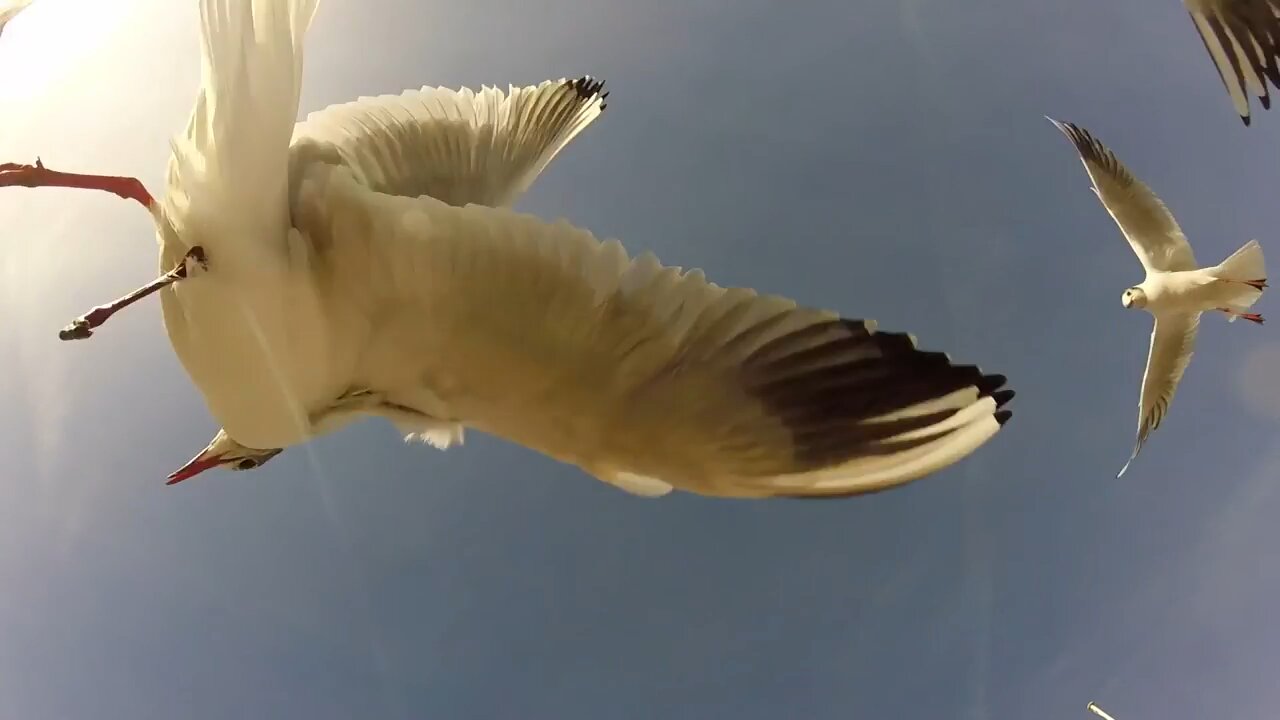Premium Only Content

Chroicocephalus ridibundus Black-Headed Gull In Flight Slow Motion.
The black-headed gull (Chroicocephalus ridibundus) is a small gull that breeds in much of the Palearctic including Europe and also in coastal eastern Canada. Most of the population is migratory and winters further south, but some birds reside in the milder westernmost areas of Europe. Small numbers also occur in northeastern North America, where it was formerly known as the common black-headed gull. As is the case with many gulls, it was previously placed in the genus Larus.
The black-headed gull displays a variety of compelling behaviours and adaptations. Some of these include removing eggshells from the nest after hatching, begging co-ordination between siblings, differences between sexes, conspecific brood parasitism, and extra-pair paternity. They are an overwintering species, found in a variety of different habitats
This gull is 37–44 cm (14+1⁄2–17+1⁄2 in) long with a 94–110 cm (37–43+1⁄2 in) wingspan and weighs 190–400 g (6+3⁄4–14+1⁄8 oz).
In flight, the white leading edge to the wing is a good field mark. The summer adult has a chocolate-brown head (not black, although does look black from a distance), pale grey body, black tips to the primary wing feathers, and red bill and legs. The hood is lost in winter, leaving just two dark spots. Immature birds have a mottled pattern of brown spots over most of the body,[4] and a black band on the tail. There is no difference in plumage between the sexes.[5]
It breeds in colonies in large reed beds or marshes, or on islands in lakes, nesting on the ground.[5] Like most gulls, it is highly gregarious in winter, both when feeding or in evening roosts. It is not a pelagic species and is rarely seen at sea far from coasts.
The black-headed gull is a bold and opportunistic feeder. It eats insects, fish, seeds, worms, scraps, and carrion in towns, or invertebrates in ploughed fields with equal relish.[5] It is a noisy species, especially in colonies, with a familiar "kree-ar" call. Its scientific name means laughing gull.
This species takes two years to reach maturity. First-year birds have a black terminal tail band, more dark areas in the wings, and, in summer, a less fully developed dark hood. Like most gulls, black-headed gulls are long-lived birds, with a maximum age of at least 32.9 years recorded in the wild, in addition to an anecdote now believed of dubious authenticity regarding a 63-year-old bird
-
 LIVE
LIVE
Boxin
1 hour agoBoxin + Moogsical RV There Yet!? Take 2! (special guest?)
45 watching -
 14:55
14:55
Nikko Ortiz
1 day agoI Laugh I Go To Hell...
47K10 -
 9:36
9:36
MattMorseTV
16 hours ago $38.60 earnedTrump’s TOLERANCE has just RUN OUT.
113K131 -
 1:39:31
1:39:31
Sam Tripoli
1 day ago $19.00 earnedBroken Sim: Owen Benjamin Was Right + Candace Owens' Background + Idiotic Comedian Rankings
22.4K15 -
 7:04:33
7:04:33
MetatronGaming
1 day agoSOMA - FULL GAME - Metatron Plays
12.5K2 -
 20:27
20:27
GritsGG
16 hours agoDominated w/ Broken Guns! 1 Shot Anywhere K98!
14.6K -
 18:11
18:11
The Pascal Show
1 day ago $5.80 earned'ERIKA IS LYING?' Candace Owens Claps Back At Erika Kirk Claims Charlie's Shocking Text Isn't True
18K28 -
 23:26
23:26
MetatronHistory
2 days agois The Armchair Historian Legit?
29.9K4 -
 1:08:29
1:08:29
omarelattar
22 hours agoThe BioHacking Experts: “How We Lost 150lbs, Healed Naturally & Reversed Aging in 9 Months!”
18.1K4 -
 8:05
8:05
Blabbering Collector
3 days agoNetflix Doesn’t Care About Hogwarts Legacy 2
34.4K6